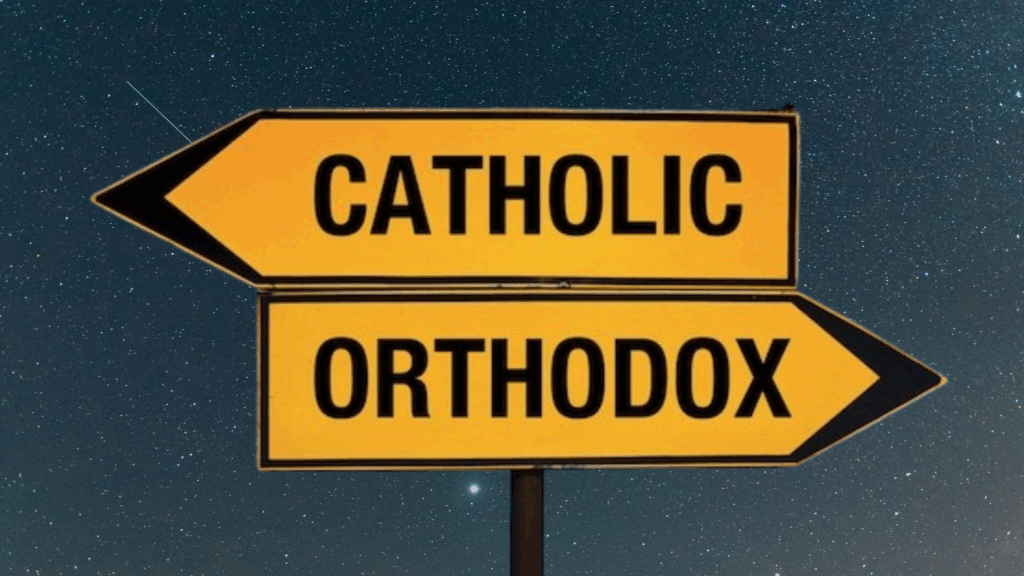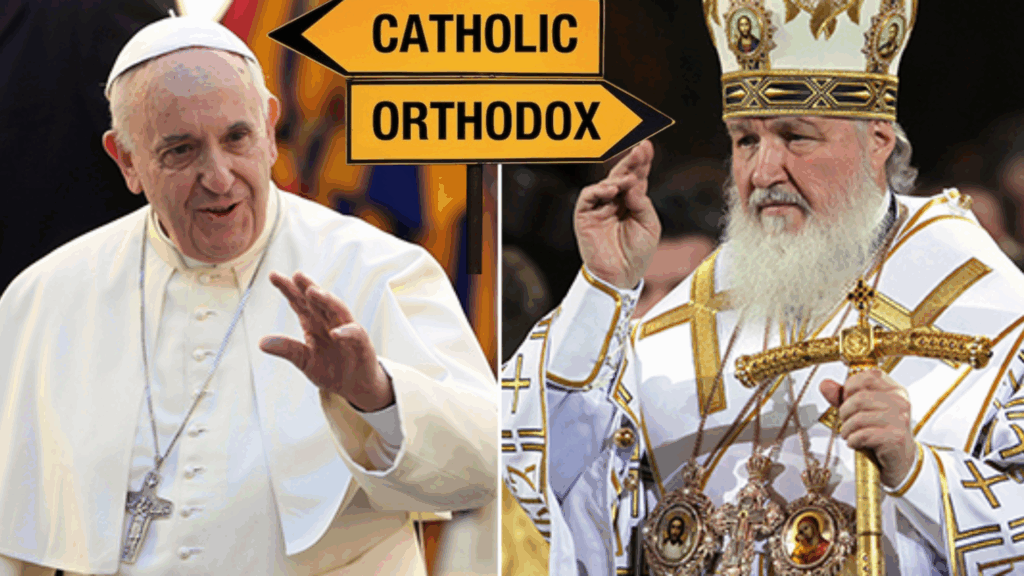What Really Separates East from West in Christianity?
At first glance, the Eastern Orthodox and Roman Catholic Churches seem remarkably similar. Both trace their origins to the apostles, celebrate the sacraments, honor the saints, and embrace ancient traditions. But beneath the surface, profound theological and spiritual differences divide these two branches of Christianity.
In this in-depth article, we’ll explore 10 of the most significant differences between Orthodoxy and Roman Catholicism. These are not mere misunderstandings or minor disagreements—they reflect deep contrasts in worldview, authority, doctrine, and spiritual life.
What Do Catholics and Orthodox Actually Agree On?
Before diving into the differences, it’s only fair to acknowledge the important areas of agreement:
The authority of the first seven Ecumenical Councils
The divine and human natures of Jesus Christ
Apostolic succession and the threefold ministry of deacons, priests, and bishops
The seven sacraments, including confession and Eucharist
Veneration of the Theotokos (Virgin Mary) and the Saints
Use of icons in worship (though stylistically distinct)
Belief in the Real Presence of Christ in the Eucharist
Rejection of Protestant doctrines like Sola Scriptura and Sola Fide
Despite this shared heritage, the Orthodox and Catholic Churches diverge significantly on critical points of faith and practice.
1. Development of Doctrine
Roman Catholicism teaches that doctrine can develop over time under the guidance of the Holy Spirit. This means that the Church’s understanding of faith may “grow” or deepen—resulting in new dogmas such as the Immaculate Conception or papal infallibility.
Eastern Orthodoxy, on the other hand, holds that while the expression of doctrine can evolve, its core substance must never change. New dogmas that didn’t exist in the early Church are seen as innovations, not authentic developments.
“Orthodox dogma doesn’t attempt to explain mysteries—it simply draws the boundaries around them.”
2. Faith and Reason
Catholicism strongly emphasizes rational theology. In his encyclical Fides et Ratio, Pope John Paul II described faith and reason as “two wings on which the human spirit rises.”
Orthodoxy respects reason—but places the heart (nous) above the intellect. Prayer and mystical experience are the true means of knowing God. Salvation is seen more as healing than legal justification.
In Orthodox thought, even a child or intellectually disabled person can know God deeply—through the prayer of the heart, not the logic of the mind.
3. Liturgical Revision
Over the past century, the Catholic Church has undergone extensive liturgical reform, especially after Vatican II. The Mass has changed in language, tone, and structure.
By contrast, Orthodox liturgy remains largely unchanged for over a thousand years. Worship is seen not as a cultural expression, but a heavenly mystery—something preserved and passed down rather than reimagined.
A Christian from the 10th century could walk into an Orthodox Church today and still feel at home.

4. Papal Supremacy
The Pope of Rome is regarded in Catholicism as the supreme, universal authority over the entire Church. He is considered the visible head of the Body of Christ on earth.
Orthodoxy rejects this. While St. Peter is honored, he is seen as “first among equals”, not above the other apostles. Only Christ is the head of the Church. Ecumenical decisions are made by conciliar agreement, not a single individual.
“No one bishop rules over all. The Church is a community of shepherds—united by the Spirit, not by a single throne.”
5. Papal Infallibility
Defined at the First Vatican Council (1870), papal infallibility teaches that the Pope cannot err when proclaiming doctrine ex cathedra.
Orthodoxy finds this concept problematic and historically unsubstantiated. No early Ecumenical Council or Church Father ever taught that any bishop was infallible, including the bishop of Rome.
Moreover, there’s no clear list of infallible statements—raising the question: If a pope falls into heresy, who judges him?
Orthodoxy: “Even patriarchs can err. Only the Holy Spirit is infallible.”
6. The Filioque
The Filioque (“and the Son”) was added to the Nicene Creed by the Western Church without ecumenical consensus. It teaches that the Holy Spirit proceeds from the Father and the Son.
Orthodoxy insists on the original Creed: the Spirit proceeds from the Father alone, as Christ said in John 15:26. Adding to the Creed without conciliar agreement violates both theology and Church unity.
The Trinity must remain balanced—each Person distinct, yet united.
7. Divine Simplicity
Catholic theology describes God as absolutely simple—His essence is identical to His attributes.
Orthodoxy, following St. Gregory Palamas, distinguishes between God’s essence (unknowable) and energies (how He reveals Himself to us). This allows us to experience God personally—through His love, grace, and mercy—without claiming to grasp His divine essence.
God is like the sun: we can’t touch its core, but we feel its warmth and see its light.
8. Created vs. Uncreated Grace
Catholicism distinguishes between uncreated grace (God Himself) and created grace, which refers to the effects of God’s presence in the soul.
Orthodoxy sees grace as wholly uncreated—it is not merely a gift from God, but God Himself acting in the world. Salvation is not transactional; it’s transformational, a real union with God through His energies.
9. The Immaculate Conception
Catholics believe that Mary was conceived without original sin so she could be a worthy vessel for Christ.
Orthodox theology rejects the Augustinian notion of inherited guilt. Sin is seen as a disease, not a legal status. Mary is honored as immaculate and all-holy, but her sanctification occurred at the Annunciation, not before birth.
As St. John Maximovitch said: “There is no victory without an adversary.”
10. Purgatory
In Catholicism, purgatory is a place of temporal punishment after death, where souls are purified before entering heaven.
Orthodoxy does not teach purgatory. Instead, it emphasizes God’s mercy and the mystery of the afterlife. While there is a transitional state before the Final Judgment, it’s not defined as punishment. Instead, souls experience God’s presence as either joy or sorrow—depending on their spiritual condition.
Final Thoughts: Two Churches, Two Worldviews
While both the Orthodox and Catholic Churches are ancient, apostolic, and sacramental, they represent distinct theological and spiritual paths.
Roman Catholicism emphasizes authority, legal categories, and doctrinal development.
Orthodoxy emphasizes mystery, continuity, and spiritual healing.
These differences are not simply about style or culture—they reflect two fundamentally different understandings of the Christian faith.

